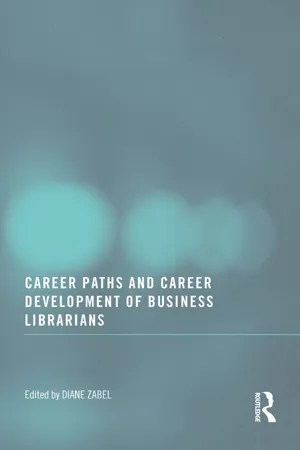LITERATURE REVIEW
The possible shortage of librarians due to the graying of the profession has been written about extensively. Although there is disagreement about whether profound shortages will be realized, the impending retirement of large numbers of librarians is well documented (e.g., Davis, 2005; Kyrillidou, 2006; Lynch, 2005). For example, Ard, Clemmons, et al. (2006) wrote that in 2009 over 25% of librarians will reach or pass age 65 and nearly out of three current librarians will retire by the end of this year (2007). Because these professionals must be replaced in the near future, recruitment and retention of younger librarians has become a focus for the library profession. The Institute for Library & Museum Services has allocated more than $29 million to recruitment efforts by universities, libraries, and library organizations (”ALA Receives $1.6 Million,” 2007; Albanese, 2007). The American Library Association (ALA) is also addressing this issue by funding campaigns to recruit diverse individuals to expand and enhance the librarian labor pool (”Recruitment and Retention,” 2003).
The potential for labor shortages in the profession is even greater in the area of subject specialties, particularly those that require backgrounds in disciplines with traditionally higher status, such as science, engineering, and technology. Liu and Wei (1993) found that more than 60% of science and technology librarians in the University of California and California State University system libraries did not possess academic degrees in their area of specialty. Hooper-Lane (1999) found that 57% of the 67 science and chemistry librarians surveyed also lacked educational backgrounds in their areas. Stuart and Drake (1992) indicated that a major barrier to recruiting librarians with science backgrounds is the typically low salary of professional librarians. Libraries simply cannot compete with business and industry in recruiting able science and technology graduates into their ranks. As a result, few professional librarians have such backgrounds, and for those who do, the competition for them within libraries is fierce. Ard and Clemmons, et al. (2006) pointed out that libraries are now also competing with the private information sector for qualified subject specialists.
Difficulty recruiting subject specialists with educational qualifications in their areas has also led to a discussion of whether competent subject specialists can be developed without such backgrounds. Fritzler (2006), for example, discussed the debate on the importance of the science degree to science librarianship. He described the difficulty in recruiting scientists into librarianship and asserted that the solution may lie in developing librarians without science backgrounds into science librarians.
The same challenges in recruiting qualified science, engineering, and technology librarians are faced in the business subject specialty. Individuals with business degrees are simply not entering the profession in significant numbers. Kendrick (1990) found that among 162 responding business librarians, 3% had undergraduate degrees in business administration, 3% in economics, 1% in accounting, 1% in management, 1% in marketing, and less than 1% in finance. MBA degrees were held by 17% of respondents. Liu and Allen (2001) further demonstrated this trend. Of 147 respondents, 56% held degrees in humanities, 16% in social sciences, 10% in professional disciplines, and 3% in science and engineering. Only 15% of respondents possessed undergraduate business degrees. Twenty-four percent of respondents held master’s degrees in economics or business. The majority (66%) of respondents with second master’s degrees earned them in the humanities. As with science and technology, business careers may offer better paying options for graduates than do library careers.
O’Connor and Marien (2002) studied job ads and surveyed employers to assess their satisfaction with the labor supply. They demonstrated that demand for business information professionals outpaces the supply. Employers were disappointed with the quantity and quality of applicants for their positions. Thirty searches for business librarians were analyzed. An average of 17 people applied for positions, though only eight on average met minimum qualifications. An overwhelming 70% of responding employers were dissatisfied with their applicant pool. Forty-three percent indicated dissatisfaction with the overall quality of applicants, 60% with the quantity of applicants, 13% with the educational backgrounds, and 40% with the previous work experience. Sixty-three percent of the responding employers attributed the poor supply to an overall shortage in qualified candidates, 43% attributed it to competition within the library profession and with other types of organizations for qualified candidates and 27% to low salaries in the profession. Forty percent of these searches were reopened due to lack of qualified candidates, though nearly all of the positions were ultimately filled. O’Connor and Marien demonstrated that recruiting qualified candidates was difficult for most libraries.
This study expands and updates the 2002 data. Its purpose is to describe the current job market for business librarians, determine what types of qualifications employers are seeking for business library positions, and assess whether shortages in qualified business librarians and information professionals have persisted over time. Job advertisements were examined from January 2001 through December 2005 from the following four journals: American Libraries, the Chronicle of Higher Education, College & Research Libraries News, and Library Journal. Surveys were either mailed or e-mailed to employers, depending on the contact information provided in the ad. Position advertisements included in the study met one of three criteria: (1) their title included the words business or corporate and librarian or information, (2) ads specified skills that are typically considered to be those of a business librarian or information professional, or (3) the employer was clearly looking for someone to staff a business-oriented library or information center (example: director in a business library). Employers were asked to complete the nine question survey within two weeks. Reminders were sent out twice during the study period via e-mail only.
